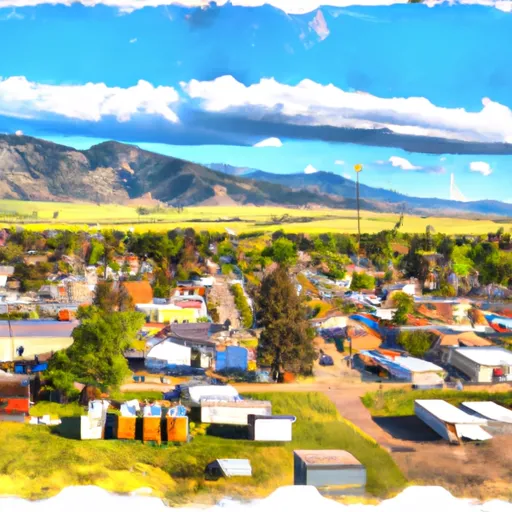-
 Snoflo Premium
Snoflo Premium
Get unlimited access to all our content
With no Ad interruptions! - Start Your Free Trial Login with existing account
Hingham
Eden Index
Climate
6.4
•
Recreation
•
Community
•
Safeguard
2.6/10

Hingham, Montana is a small town located in the north-central part of the state. Known for its picturesque landscapes and outdoor recreation opportunities, the town offers a unique experience for residents and visitors alike. Hingham has a semi-arid climate, characterized by hot summers and cold winters. The average annual precipitation is around 13 inches, with most of it occurring during the spring and early summer months.
Hydrologically, Hingham is situated in an area where the Marias River and Milk River watersheds converge. These rivers provide a source of water for the town and support a diverse range of aquatic life and vegetation. Outdoor enthusiasts can take advantage of the region's natural beauty through activities such as fishing, boating, and wildlife watching. The nearby Hingham Reservoir offers opportunities for water-based recreation, including kayaking and paddleboarding.
Hingham is also surrounded by sprawling grasslands, making it ideal for hiking, biking, and camping. With its rich biodiversity and stunning vistas, the area attracts nature lovers and photographers. Overall, Hingham, Montana offers a unique blend of climate, hydrology constituents, and outdoor recreation opportunities that make it a charming destination for those seeking a tranquil and adventurous experience in the heart of Montana.
What is the Eden Index?
The Snoflo Eden Index serves as a comprehensive rating system for regions, evaluating their desirability through a holistic assessment of climate health, outdoor recreation opportunities, and natural disaster risk, acknowledging the profound impact of these factors on livability and well-being.
Climate Health Indicator (CHI): 6.4
Hingham receives approximately
272mm of rain per year,
with humidity levels near 69%
and air temperatures averaging around
6°C.
Hingham has a plant hardyness factor of
3, meaning
plants and agriculture in this region thrive during a short period during spring and early summer. Most
plants will die off during the colder winter months.
By considering the ideal temperature range, reliable water supplies, clean air, and stable seasonal rain or snowpacks, the Climate Health Indicator (CHI) underscores the significance of a healthy climate as the foundation for quality living.
A healthy climate is paramount for ensuring a high quality of life and livability in a region, fostering both physical well-being and environmental harmony. This can be characterized by ideal temperatures, reliable access to water supplies, clean air, and consistent seasonal rain or snowpacks.
Weather Forecast
Streamflow Conditions
Milk
Area Rivers
Milk
Snowpack Depths
Milk
Reservoir Storage Capacity
Milk
Groundwater Levels
Recreational Opportunity Index (ROI):
The Recreational Opportunity Index (ROI) recognizes the value of outdoor recreational options, such as parks, hiking trails, camping sites, and fishing spots, while acknowledging that climate plays a pivotal role in ensuring the comfort and consistency of these experiences.
Access to outdoor recreational opportunities, encompassing activities such as parks, hiking, camping, and fishing, is crucial for overall well-being, and the climate plays a pivotal role in enabling and enhancing these experiences, ensuring that individuals can engage in nature-based activities comfortably and consistently.
Camping Areas
| Campground | Campsites | Reservations | Toilets | Showers | Elevation |
|---|---|---|---|---|---|
| Coal Banks Landing | None | 2,553 ft |
Nearby Ski Areas
Catastrophe Safeguard Index (CSI):
The Catastrophe Safeguard Index (CSI) recognizes that natural disaster risk, encompassing floods, fires, hurricanes, and tornadoes, can drastically affect safety and the overall appeal of an area.
The level of natural disaster risk in a region significantly affects safety and the overall livability, with climate change amplifying these risks by potentially increasing the frequency and intensity of events like floods, fires, hurricanes, and tornadoes, thereby posing substantial challenges to community resilience and well-being.
Community Resilience Indicator (CRI):
The Community Resilience Indicator (CRI) recognizes that education, healthcare, and socioeconomics are crucial to the well-being of a region. The CRI acknowledges the profound impact of these elements on residents' overall quality of life. By evaluating educational resources, healthcare accessibility, and economic inclusivity, the index captures the essential aspects that contribute to a thriving community, fostering resident satisfaction, equity, and social cohesion.

